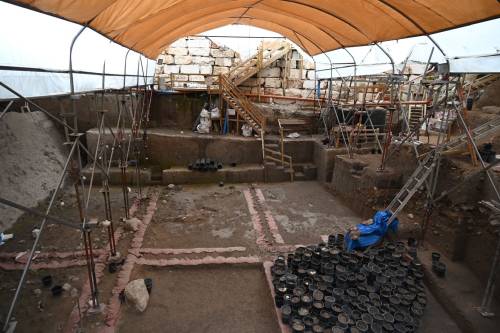Archaeologists have discovered the tomb of Thutmose II, the first royal tomb found in Egypt since King Tut’s tomb in 1922.
A previously unknown pyramid from circa 2000 BC was discovered by quarry workers in the Dahshur area.
“A devastating new report reveals the extent of destruction in Syria’s legendary city of Palmyra, where eight out of ten buildings now lie in ruins or on the verge of collapse.”
James Gold explains his work as an archaeological illustrator and why it is important.
Carl Rasmussen has posted photos from Yesemek, the largest stone masonry workshop in the ancient Near East.
“Lead pollution in ancient Rome was so high that it dropped the population’s IQ by around 3 points, if not more.”
“Malta is home to some of the oldest and arguably most mysterious megalithic structures known to man, older than the Pyramids and Stonehenge.”
Archaeology Magazine has published a well-illustrated story about the restoration of the Temple of Knum in Esna.
Kara Cooney explains when it is OK to recycle an ancient Egyptian coffin.
Zoom lecture on March 5: “Why is Alexander on the Alexander Sarcophagus? Rethinking a Funerary Monument from Sidon,” by Jessica Nitschke
Hybrid lecture on March 13: “The Amman Citadel in Light of Recent Archaeological Work,” by Katharina Schmidt
Bible Archaeology Report has posted an archaeological biography of Merodach-Baladan, the king of Babylon during the days of Hezekiah.
Correction: The notice last week about a third bridge being discovered in Jerash was a false report caused by a local reporter’s misunderstanding. There are only two bridges.
HT: Agade, Ted Weis, Gordon Franz, Keith Keyser
